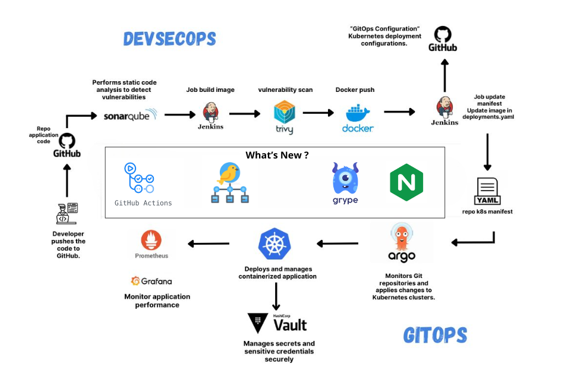
"But DevOps isn't static. Threats evolve, tools mature, and teams need pipelines that scale with them. The real challenge isn't just building a pipeline once - it's continuously improving it based on production experience and evolving requirements. Prerequisites If you followed Part 1, most of the setup is already in place. For this part, you'll specifically need: Technical A Kubernetes cluster with kubectl access A GitHub repository with Actions enabled and admin permissions"
"Quick Recap of Part 1 We built a strong foundation with: Core Architecture: Jenkins CI/CD, ArgoCD GitOps, Trivy scanning, Vault for secrets Security-first approach: Multi-stage scanning, zero-trust secrets, policy-as-code GitOps Workflow: Code Push → Jenkins Build → Security Scans → ArgoCD Sync → K8s Deploy → Monitoring This pipeline supported multiple applications across teams in development and early production."
Migrate CI from Jenkins to GitHub Actions to reduce operational overhead and leverage native repository integration and workflows-as-code. Strengthen security and secrets management by enhancing Trivy scans and Vault usage and applying policy-as-code. Adopt progressive delivery using canary deployments to improve resilience and controlled rollouts. Expose applications via an Ingress controller to manage external traffic and routing. Maintain GitOps through ArgoCD for continuous deployment and cluster state reconciliation. Ensure prerequisites include kubectl access to a Kubernetes cluster and a GitHub repository with Actions and admin permissions for pipeline execution.
Read at Medium
Unable to calculate read time
Collection
[
|
...
]